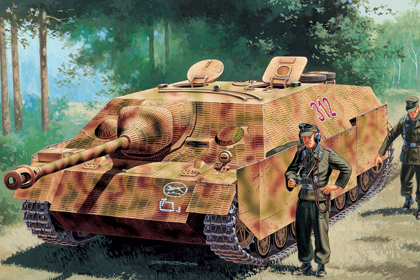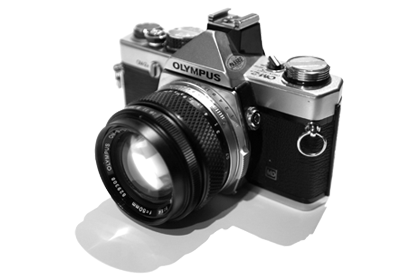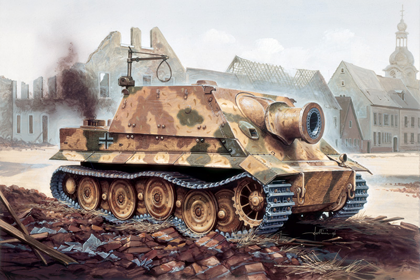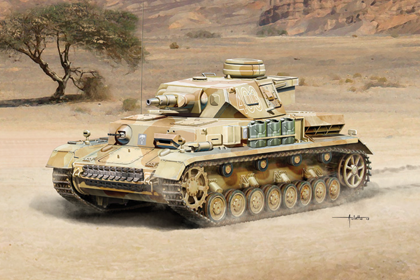![]()
This is the Eduard, photo etch set for the ‘German JagdPanzer IV L/48‘ from Dragon†.
Detail set |
Dragon |
||||
| (35 922) | Basic | 9021 | |||
Source: Eduard
![]()
This is the Eduard, photo etch set for the ‘German JagdPanzer IV L/48‘ from Dragon†.
Detail set |
Dragon |
||||
| (35 922) | Basic | 9021 | |||
Source: Eduard
This is the Italeri 6488 kit in 1/35 scale, of the ‘German JagdPanzer IV, Ausf. F’.

The JagdPanzer Mark IV self-propelled tank-killer was built on the chassis of the Pz.Kpw.IV, one of the most efficient and widely used German tanks of the Second World War.
Characterised by a low profile, the Mark IVs were produced in their hundreds, steadily being improved and fitted with better weaponry such as the long-barrelled 7.5 cm gun that made it a match for any Allied tank.
This is the Dragon 9145 kit in 1/35 scale, of the ‘German JagdPanzer IV L/48’.

As one of the casemate-style turretless Jagdpanzer (tank destroyer, literally “hunting tank”) designs, it was developed against the wishes of Heinz Guderian, the inspector general of the Panzertruppen, as a replacement for the Sturmgeschütz III (StuG III). Guderian objected against the needless, in his eyes, diversion of resources from Panzer IV tank production, as the Stug III and Sturmgeschütz IV were still more than adequate for their role.
Officially, only the L/48-armed vehicle was named Jagdpanzer IV. The L/70-armed vehicle was named Panzer IV/70.

Aftermarket working plastic track links for my German vehicles, in 1/35 scale.
Please verify the vendor’s website, before using the information below
Panzer I |
|||||||
| Pz.Kpfw.I | |||||||
| Pz.Kpfw.I, Ausf.C (VK 601) | |||||||
| Pz.Kpfw.I, Ausf.F | |||||||
| Pz.Kpfw.I, s.IG.33 | |||||||
Panzer II |
|||||||
| Pz.Kpfw.II | |||||||
| Pz.Kpfw.II, Ausf.D | SK-54 | SK-56 | |||||
| Pz.Kpfw.II, Ausf.J | |||||||
| Pz.Kpfw.II, Ausf.L (Luchs) | SK-51 | ||||||
| Pz.Kpfw.II (Flamethrower) | |||||||
Panzer III |
|||||||
| Pz.Kpfw.III, Ausf.A | |||||||
| Pz.Kpfw.III, Ausf.B | SK-18 | SK-24 | |||||
| Pz.Kpfw.III, Ausf.C | SK-18 | SK-24 | |||||
| Pz.Kpfw.III, Ausf.D | SK-18 | SK-24 | |||||
| Pz.Kpfw.III, Ausf.E | SK-18 | SK-24 | SK-26 | ||||
| Pz.Kpfw.III, Ausf.F | SK-18 | SK-24 | SK-26 | ||||
| Pz.Kpfw.III, Ausf.G | SK-18 | SK-24 | SK-26 | ||||
| Pz.Kpfw.III, Ausf.H | SK-18 | SK-24 | |||||
| Pz.Kpfw.III, Ausf.J, Initial | SK-18 | SK-24 | |||||
| Pz.Kpfw.III, Ausf.J | SK-18 | ||||||
| Pz.Kpfw.III, Ausf.K | SK-18 | ||||||
| Pz.Kpfw.III, Ausf.L | SK-18 | SK-23 | |||||
| Pz.Kpfw.III, Ausf.M | SK-18 | SK-23 | |||||
| Pz.Kpfw.III, Ausf.N | SK-18 | SK-23 | |||||
Panzer IV |
|||||||
| Pz.Kpfw.IV, Ausf.A | SK-26 | SK-57 | |||||
| Pz.Kpfw.IV, Ausf.B | SK-26 | SK-57 | |||||
| Pz.Kpfw.IV, Ausf.C | SK-26 | SK-57 | |||||
| Pz.Kpfw.IV, Ausf.D | SK-26 | ||||||
| Pz.Kpfw.IV, Ausf.E | SK-26 | ||||||
| Pz.Kpfw.IV, Ausf.F | SK-18 | ||||||
| Pz.Kpfw.IV, Ausf.F2 | SK-18 | ||||||
| Pz.Kpfw.IV, Ausf.G | SK-17 | SK-18 | SK-23 | ||||
| Pz.Kpfw.IV, Ausf.H | SK-17 | SK-18 | SK-23 | ||||
| Pz.Kpfw.IV, Ausf.J | SK-17 | SK-22 | SK-23 | SK-27 | |||
Heavy |
|||||||
| Tiger I, Initial | |||||||
| Tiger I, Early | SK-02 | SK-05 | |||||
| Tiger I, Middle | |||||||
| Tiger I, Late | SK-01 | SK-04 | |||||
Destroyer |
|||||||
| Elefant, Early | SK-66 | SK-68 | |||||
| Elefant, Middle | SK-66 | SK-69 | |||||
| Nashorn | |||||||
Assault |
|||||||
| StuG III, Ausf.A | SK-26 | SK-57 | |||||
| StuG III, Ausf.B | SK-24 | SK-26 | SK-67 | ||||
| StuG III, Ausf.C/D | SK-18 | SK-67 | |||||
| StuG III, Ausf.D | SK-18 | SK-67 | |||||
| StuG III, Ausf.E | SK-18 | SK-67 | |||||
| StuG III, Ausf.F | SK-18 | SK-67 | |||||
| StuG III, Ausf.F/8 | SK-18 | SK-23 | |||||
| StuG III, Ausf.G | SK-17 | SK-18 | SK-22 | SK-23 | |||
| StuG III, Ausf.G – L/48 | SK-18 | SK-23 | |||||
Other |
|||||||
| RSO Tractor | SK-33 | ||||||
Source: Modelkasten
This is the Tristar 35038 kit in 1/35 scale, of the ‘German Sturmpanzer IV – Early version’.

It was known by the nickname Brummbär (German: “Grouch”) by Allied intelligence, a name which was not used by the Germans.
Just over 300 vehicles were built and they were assigned to four independent battalions.
This is the Dragon 6126 kit in 1/35 scale, of the ‘German Elefant’.

Elefant (German for “elephant”) was a Schwerer Panzerjäger (“heavy tank destroyer”) of the German Wehrmacht used in small numbers in World War II. It was built in 1943 under the name Ferdinand, after its designer Ferdinand Porsche.
In 1944, after modification of the existing vehicles, they were renamed Elefant. The official German designation was Panzerjäger Tiger (P) and the ordnance inventory designation was Sd.Kfz.184.
This is the Trumpeter 00207 kit in 1/35 scale, of the ‘German 280mm, Railroad Gun, Leopold’.

By 1918 the railway gun was in use by nearly all the major combatants and among them Germany was the major country with this powerful armament. But after 1918 the Treaty commissions scrapped all the German railway artillery. After the NSDAP came to power in 1933 the German military began a major rearmament program and on the list of weapons needed were modern railway guns. Before 1933 a great deal of theoretical work had been carried out on future railway guns but it was not until 1934 that the first practical work began on two new designs. In time these were to emerge as the K5 (E) and K12 (E).
The Leopold had an unconfirmed range of 11 miles and fired a pre-engraved projectile weighing approximately 550 pounds. It is fired from a turntable affording a 360degree traverse. The gun has a 70-foot 8-inch barrel held in a sleeve-type cradle. The barrel recoil mechanism, fitted between two arms projecting downward from the cradle, consists of two hydro pneumatic cylinders and a single hydraulic buffer cylinder. A central jack helps support the tremendous weight of the gun and carriage, which amounts to around 230 tons and also serves as a central pivot for the turntable.
The German Leopold Gun was the largest weapon, which lobbed shells at American troops at “Anzio Beach”. The Leopold supported by 24 railcar wheels, was mounted on railroad tracks, which led in and out of mountain tunnels. When not firing, the gun was rolled back into the tunnels out of the sight of Allied reconnaissance. Although both guns had been extensively damaged, Allied forces were able to salvage the Leopold and after reconstruction of the railway, moved the gun to Naples for shipment to the United States. “Anzio Annie” as the gun was known to the Allied troops at Anzio, is the only German railroad gun known to have survived World War II. The Leopold is currently on display at the Aberdeen Proving Ground in Aberdeen, Maryland.
This is the Italeri 0299 kit in 1/35 scale, of the ‘German Sturmmörser Tiger mit 38 cm RW 61’.

Only few units of the Sturmtiger were built and were mainly used in 1994 at the Eastern front.
This is the Italeri 6514 kit in 1/35 scale, of the ‘German Pz.Kpfw.IV Ausf. F1/F2, early version’.

The Panzer IV was the most extensively used German tank during the Second World War. It represented the “backbone” of the German Panzer Divisions on all operational theaters.The production of Panzer IV Ausf. F, started in 1941, marked a decisive boost in the evolution of the tank. It featured an improved armor on the turret and hull.
The first version of Panzer IV F, featuring the traditional 7.5 cm. KwK 37 short-barreled cannon, were not able to fight successfully against the Soviet T-34 and KV-1 heavy armoured tank.The adoption of the anti-tank design KwK 40 long-barreled cannon, on the Ausf. F2 version, has decisively increased the Panzer IV effectiveness against enemy tanks.
Thanks to its new high velocity and high penetration gun, the Panzer IV became, once again, “lethal” on the battlefields.
This is the Italeri 6487 kit in 1/35 scale, of the ‘German Panzerkampfwagen VI, Tiger I – Hybrid’.

Period photos show that at the moment of Germany’s defeat, many vehicles had been collected in factories, and were ready to be put back in operation by replacing worn-out or combat-damaged parts. Reliable sources confirm that the last Tigers to come out of assembly lines were reconstructed with salvaged materials: 54 hulls and 32 turrets of the first series, possibly from tanks used in training units.Their wheels were replaced by the latest, full-metal ones, and on some tanks the anti-magnetic “Zimmerit” paste was applied directly in the factory. These tanks were assigned to training schools to form new crews.
In the last weeks of war, they took part in the last engagements of the various Kampfgruppe (combat groups formed with units coming from different detachments) that were trying to stop the Allied units swarming over Germany from East and West.